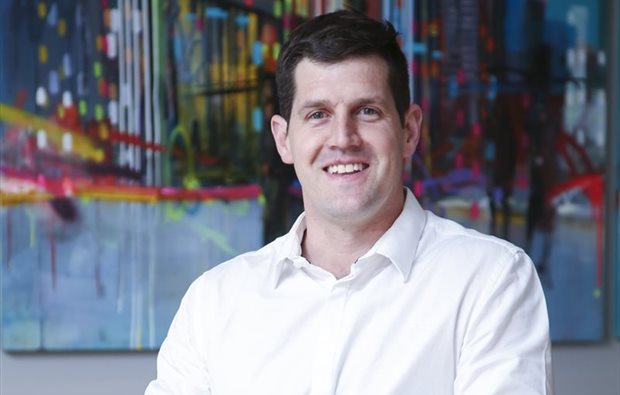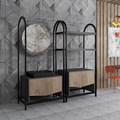
Michael Spinks, property and development director at Nando’s South Africa.
1. Could 'smaller' be the next big thing?
The commercial viability or feasibility of a restaurant is achieved by carefully balancing the relationship between cost, return and intended restaurant experience. All three factors need to be evaluated to achieve value to both the investor and customer. Prudence in managing build-time and quality also ensure longevity of the estate investment.
A rich customer experience is achieved through clever design and layout to ensure that your build cost is managed; smaller formats and efficiencies in restaurants that bring the cost of build down is a major trend at the moment.
2. Invest time and resources in analysing trends
Within the quick service restaurant (QSR) industry there is always an aspect of change, and this change is driven by customer trends and fluctuating consumer behaviour. Sure, the economic and commercial conditions change over time but the biggest consideration is how customer behavior will transform, and how we accommodate for those changes in the future.
The need for immediate convenience will see the rise of smaller boutique malls, but we are also going to see more varied models applied. Families may still opt to sit at their favourite restaurant instead of small grab-and-go formats, the trick is in assessing the estate and surrounding consumer behaviours carefully. It is all about the customer's chosen experience and realising value for the customer by offering a unique dining experience.
3. The best-placed estate means nothing without a good customer experience strategy
Whilst the location of our restaurants is key, it’s all about customer experience within those restaurants. When looking at designing a customer experience, Nando’s’ approach is to tailor each location so that you know it’s a Nando’s restaurant when you walk in. But each one you visit has something different to offer – for us it’s in authentic South African art and design.
In fact, each Nando’s restaurant is a mini-art gallery and uniquely clad with indigenous designs and crafts, sourced from South Africa’s pool of incredible design talent.
Think about how you can add a unique customer experience to your estate, whilst offering the best possible position to your customers. A great customer experience in a bad location can be just as detrimental to the brand as a poor customer experience.
4. Flexibility is gold
The one factor I see negatively impacting the QSR industry is a brand identity that isn’t flexible enough to allow design to lead. Nando’s has an advantage in that our identity is very flexible by applying various designs to the assets. In that way your brand is instantly recognised, but adaptable in any space.
We have seen a trend in QSR towards the 'grab and go' concept in response to customers seeking value and brands looking to reduce the cost of doing business. This has not always proven to be a prudent move as the brand needs to respond to the customer and the environment offering the right experience to the right customer.
All customers are feeling the economic pressure but not all customers are willing to trade the value of a good experience.
5. Add value to your supply chain
Nando’s has created sustainable demand through its new builds and continuous the revamp cycle that is followed around the world. The opportunity to tap into the creative communities in South Africa and make a difference in the lives of ordinary South Africans could not be ignored.
From a vision perspective, Nando’s has always supported creative talent and the arts industry. When we combined that vision with our current supply chain, we not only added incredible value to the arts and design sectors, but infused a truly unique look and feel into each of our stores – which, in turn, has helped build the Nando’s brand.
Ask yourself the question: is there a way to procure what you need and help those you buy from at the same time? This is how future brands are using design thinking to grow and show relevance.
6. Technology drives sustainability
I’m not speaking about free Wi-Fi, because to be honest, this is fast becoming the norm in sit down restaurants. Building management systems have been around forever but their use in restaurant spaces hasn’t been exploited as much as I think it could be.
For example, Nando’s uses a bespoke building management system that controls the lighting, air-conditioning, and the sound in our restaurants. The importance of using technology-led systems is so that our employees who make and sell the chicken can focus on delivering the best quality food.
Our building management system is also plugged-in to environmental conditions, so if its morning and bright outside, the lighting won’t operate at 100% efficiency. At night, the lights are controlled to switch off completely, so you can’t leave a restaurant’s lights burning during the night. This type of tech helps us address light pollution and energy usage, but most importantly allows us to deliver a consistent experience to our customers’ every time they visit our restaurants.
Tech is also changing the shape of our restaurants as customers use online ordering platforms more frequently we have had to respond to this change to accommodate new customers who engage with our brand virtually. This has had a real impact on the design of our stores and how we manage this service channel.
7. Sustainable material selection
Another element of sustainability is our material selection. Certain materials have greater value than others. For example, Nando’s uses materials such as solid timber that is environmentally sustainable. These applied materials outlast the lifespan of the tree it’s made from by four times its life span, and we can reuse that tabletop four or five times before it is replaced. That’s 20 to 25 years!
We do the same with solid timber floors, and often those are reclaimed. Take a look at where you can create longevity in the finishing material and where you can reuse materials to create a sustainable approach to estate management and growth.
If estate development forms a big part of what you do, think about how you can improve the process, and maybe even the sector that you spend so much time in. Yes, we’re a chicken brand but it doesn’t mean we can’t elevate our brand by investing in our supply chain.

















































